Exploring the Majestic Planet Jupiter: A Comprehensive Study
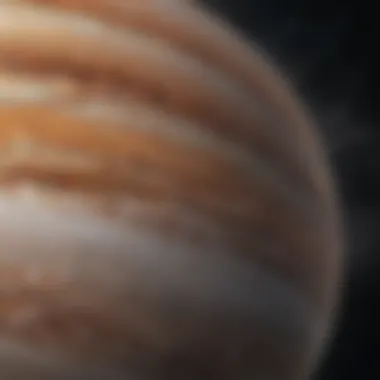
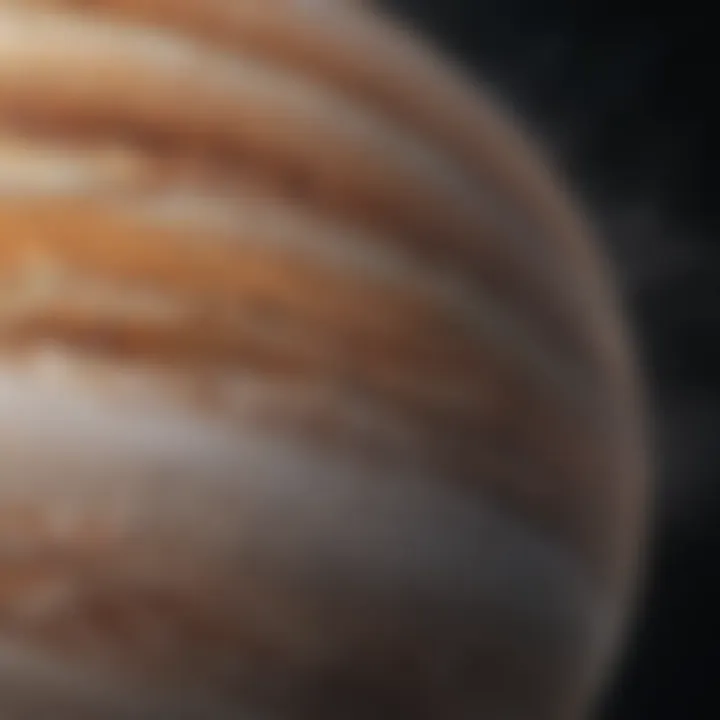
Article Overview
Purpose of the Article
This article aims to provide an extensive examination of Jupiter, emphasizing its unique characteristics and significance in the solar system. Understanding Jupiter helps to put into context the formation and evolution of our own planet Earth. The analysis will explore the planet’s atmosphere, physical attributes, and its numerous moons.
Relevance to Multiple Disciplines
Jupiter is not only a point of interest for astronomers but also crucial for climatologists, geologists, and planetary scientists. Insights gained from studying this gas giant can influence theories related to atmospheric science, planetary formation, and even the potential for life in extreme conditions elsewhere in the universe.
Research Background
Historical Context
Jupiter has been observed for centuries, with the earliest records dating back to Babylonian astronomers. The invention of powerful telescopes in the seventeenth century marked a significant leap in our understanding. Galileo Galilei's observations of Jupiter’s moons revealed that not all celestial bodies revolve around the Earth, challenging the geocentric view of the universe.
Key Concepts and Definitions
- Gas Giant: Jupiter is classified as a gas giant because it lacks a solid surface and is primarily composed of hydrogen and helium.
- Atmosphere: The planet has a thick atmosphere with turbulent storms, including the Great Red Spot, a giant storm lasting for at least 350 years.
- Moons: Jupiter has 79 known moons, including the four largest known as the Galilean moons: Io, Europa, Ganymede, and Callisto. Each of these moons has distinctive traits that contribute to our understanding of planetary sciences.
Jupiter's immense gravity and magnetic field provide insights into the behavior of other celestial bodies, revealing patterns that extend beyond our solar system.
Jupiter's immense gravity and magnetic field provide insights into the behavior of other celestial bodies, revealing patterns that extend beyond our solar system.
Jupiter stands as a monumental figure in space exploration. As scientists delve deeper into its mysteries, we continue to uncover clues that will inform our comprehension of the cosmos.
Prelims to Jupiter
Jupiter represents a compelling focal point in our solar system, captivating scientists and enthusiasts alike. As the largest planet, its immense size and distinctive features are central to understanding planetary dynamics. This section will delve into the essence of Jupiter, its characteristics, and its historical significance in astronomical studies.
Understanding Jupiter is crucial for several reasons: it provides insights into our solar system's formation and evolution. Moreover, its complex atmosphere and substantial gravitational influence make it pivotal in shaping the orbits of other celestial bodies. Recognizing these features aids researchers in drawing parallels between Jupiter and exoplanets. Thus, an introductory exploration of Jupiter lays the foundation for more detailed discussions in subsequent sections.
Overview of Jupiter's Characteristics
Jupiter is often referred to as a gas giant due to its thick atmosphere composed mainly of hydrogen and helium. However, its structure is significantly more intricate. The planet boasts a diameter of about 86,881 miles, making it more than 11 times wider than Earth. Furthermore, its mass is approximately 318 times that of our planet, demonstrating its dominance within the solar system.
The most vivid aspect of Jupiter is its atmosphere, featuring enormous storms and dynamic weather patterns. The Great Red Spot, a gigantic storm, has persisted for centuries, indicating the planet's meteorological complexity. The planet is also known for its strong magnetic field, which is around 20,000 times that of Earth's, evidencing its unique internal structure and processes.
Historical Context of Jupiter Studies
Research on Jupiter has evolved significantly since the inception of astronomy. Ancient civilizations viewed Jupiter through the lens of mythology, deifying it as a king among the gods. With the invention of the telescope in the early 17th century, astronomers began to observe Jupiter more closely, marking a revolutionary phase of exploration.
In the 20th century, missions such as Pioneer and Voyager expanded our understanding, revealing the intricate details of its moon system and atmospheric phenomena. In recent years, the Juno mission has further deepened our knowledge of Jupiter's magnetic field, gravitational dynamics, and atmospheric behavior. This historical context underscores the importance of continual exploration, revealing how this gas giant has shaped scientific thought and exploration methodologies in planetary science.
Understanding Jupiter not only enhances our knowledge of planetary systems but also informs us about the origins and complexities of our own planet.
Understanding Jupiter not only enhances our knowledge of planetary systems but also informs us about the origins and complexities of our own planet.
Formation and Structure of Jupiter
Understanding the formation and structure of Jupiter is crucial to our overall comprehension of the solar system and the processes that govern planetary evolution. As the largest planet, Jupiter provides insights into the conditions and materials present during the early stages of planetary formation. Examining its structure not only reveals details about its core and atmosphere but also helps explain the dynamics at play within gas giants. Factors such as composition, gravitational influence, and energy distribution significantly impact how Jupiter interacts with its moons and surrounding environment.
Theories Regarding Planetary Formation
Planetary formation theories seek to explain how Jupiter, along with other celestial bodies, came to exist. One prominent theory is the nebular hypothesis, which suggests that a rotating disk of gas and dust formed from a collapsing molecular cloud. Over time, particles within this disk collided and coalesced, leading to the creation of planetesimals, the building blocks of planets.
Jupiter likely formed through a process known as core accretion. In this scenario, a solid core composed of heavy elements developed first. The gravity of this core was then sufficient to attract a massive envelope of hydrogen and helium gas, resulting in Jupiter’s substantial size. Another theory involves gravitational instability, which posits that Jupiter could have formed rapidly from the collapse of dense regions within the protoplanetary disk. Both theories contribute to our understanding but also present challenges in explaining certain characteristics observed in Jupiter today.
Jupiter's Core and Atmosphere
Jupiter's internal structure features a core that is believed to be composed of rock and ice. Estimates suggest that this core could have a mass three to ten times that of Earth. Surrounding this core is a layer of metallic hydrogen, which results from extreme pressure causing hydrogen atoms to lose their distinct characteristics and behave like a metal. Above this layer is a thick gaseous atmosphere that encompasses the planet. The atmosphere is rich in hydrogen and helium, with trace amounts of other elements and compounds, such as ammonia and methane.
The dynamics of Jupiter's atmosphere are essential for understanding its weather patterns and storms. Wind speeds can reach up to 360 kilometers per hour, contributing to the formation of various weather systems. Moreover, the atmosphere showcases striking phenomena such as the Great Red Spot, a massive storm larger than Earth, which has persisted for centuries.
In summary, the formation and structure of Jupiter are paramount to our understanding of planetary science. By analyzing theories of how Jupiter formed and the details of its core and atmosphere, we gain valuable insights into both the gas giant itself and the broader processes that shape our solar system's architecture.
Atmosphere of Jupiter
The atmosphere of Jupiter plays a crucial role in understanding not only this planet but also the dynamics of gas giants as a whole. This section will explore the composition, dynamics, and weather patterns of this intriguing atmospheric system. By examining the air currents, chemical composition, and storms, one can gain insights into the fundamental processes that govern Jupiter.
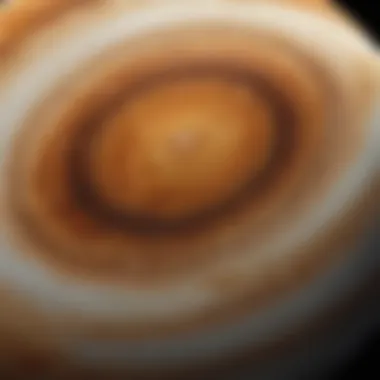
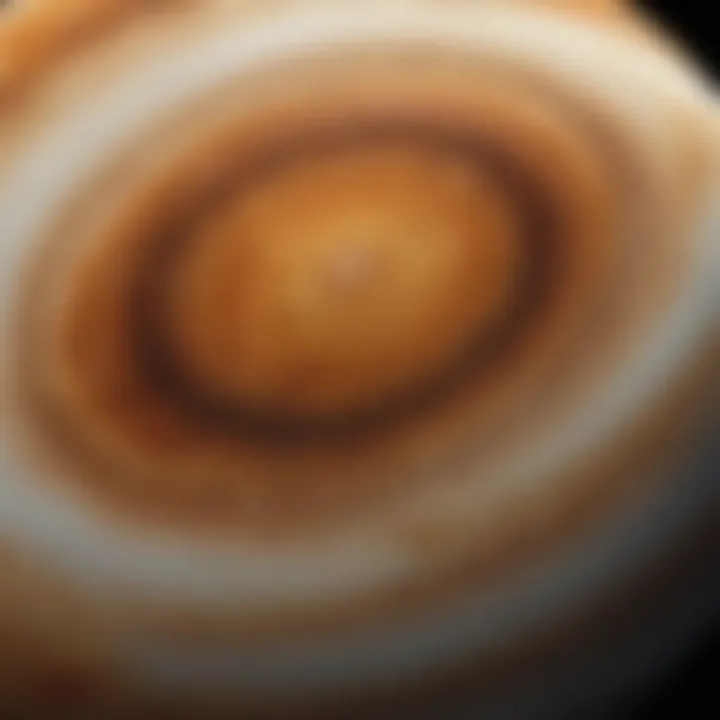
Composition and Dynamics
Jupiter's atmosphere is composed mainly of hydrogen and helium. These two elements constitute approximately 90% of its atmosphere. Other gases, such as ammonia, methane, and water vapor, exist in trace amounts. The way these gases interact creates a complex dynamic system. The atmosphere is divided into several layers, each with different temperature gradients and wind speeds.
The temperature can vary greatly, from about -145 degrees Celsius in the upper atmosphere to much higher temperatures deeper within. The most significant feature contributing to the dynamics is the intense wind patterns. Jet streams create bands of clouds that flow at different speeds, resulting in the distinctive stripes seen on Jupiter. The planet also exhibits a phenomenon of vertical mixing. This mixing is responsible for transporting chemical elements and heat, impacting the overall atmospheric dynamics of Jupiter.
Weather Patterns and Storms
Weather patterns on Jupiter are not only intense but also varied. The atmosphere is in constant flux, with storms forming and dissipating as wind patterns shift. Understanding these patterns is vital for grasping the planet's climatic system.
Great Red Spot
The Great Red Spot is a massive storm that has been raging for at least 350 years. It is characterized by its reddish hue and dominates the southern hemisphere of Jupiter. This storm is approximately 1.3 times the diameter of Earth, making it one of the largest storms in the solar system. What makes the Great Red Spot particularly interesting is its longevity and persistence in a high-energy atmosphere. Unlike storms on Earth, which dissipate over a shorter period, the Great Red Spot continues to grow and alter its shape.
The advantages of studying the Great Red Spot include insights into long-lived atmospheric phenomena and scale. It serves as a useful tool for understanding energy dynamics in gas giants. However, observations indicate that the storm is shrinking; thus, its future is uncertain.
Lightning and Wind
Jupiter’s atmosphere is home to some of the most powerful thunderstorms in the solar system. The phenomena of lightning present on Jupiter is significantly more frequent than on Earth. The electrical storms occur mainly in the equatorial region, where conditions are ideal for storm formation.
The key characteristic of this lightning is its intensity. Lightning strikes on Jupiter can reach voltages far exceeding those on Earth, indicating complex interactions within the atmosphere. The powerful winds associated with these storms can exceed 600 kilometers per hour. This high-speed wind not only shapes the storms but also redistributes energy through the atmosphere.
The presence of lightning and strong winds highlight the complexity of Jupiter’s atmosphere. While they may provide data for comparative studies of different planetary atmospheres, they also serve as a caution regarding the unpredictable nature of the planet. Understanding these weather patterns adds depth to our comprehension of not only Jupiter but also broader planetary weather systems.
"Jupiter's atmosphere remains a subject of keen interest, providing a window into the dynamics of not just a gas giant, but also the fundamental principles governing planetary atmospheres in our solar system."
"Jupiter's atmosphere remains a subject of keen interest, providing a window into the dynamics of not just a gas giant, but also the fundamental principles governing planetary atmospheres in our solar system."
In summary,
- Jupiter's atmosphere consists primarily of hydrogen and helium.
- Dynamic weather patterns, including the Great Red Spot and impressive storms, demonstrate the complexity of the planet's atmosphere.
- Studying these elements can lead to valuable insights regarding gas giants and planetary atmospheres in general.
Jupiter's Moons
Jupiter's moons present a fascinating aspect of this gas giant. The planet has 79 known moons, with the four largest moons—Io, Europa, Ganymede, and Callisto—often referred to as the Galilean moons. Each moon offers unique characteristics that enhance our understanding of celestial bodies and their formations. Studying these moons helps scientists grasp the complexities of planetary systems and provides insight into potential life beyond Earth.
Overview of Major Moons
Io
Io is one of the most geologically active bodies in the solar system. It is covered with hundreds of volcanoes, some of which are still active. This makes Io a subject of great interest in the context of planetary activity. The extreme volcanic activity is primarily caused by the immense gravitational interaction with Jupiter and other moons.
The key characteristic of Io is its diverse surface, with varied colors indicating different types of volcanic activity. This is beneficial for understanding volcanic processes in planetary science. However, the constant geological changes make long-term observation challenging, which can be seen as a disadvantage for certain studies.
"Io’s volcanic activity demonstrates the dynamic processes that can occur on a planetary body without a significant atmosphere."
"Io’s volcanic activity demonstrates the dynamic processes that can occur on a planetary body without a significant atmosphere."
Europa
Europa is recognized for its smooth ice-covered surface, believed to hide a subsurface ocean beneath. This moon is critical when exploring the potential for life in our solar system. The presence of water in liquid form raises interesting questions about habitability.
The key feature of Europa is its potential for an ocean that may harbor life. This makes it a key target for current and future explorations, such as the Europa Clipper mission. The challenge, however, lies in understanding how the surface interacts with the ocean below, which complicates direct assessments of its habitability.
Ganymede
Ganymede is notable for being the largest moon in the solar system. It possesses a magnetic field, a unique characteristic among moons. This magnetic field likely results from a partially liquid iron-nickel core.
The significance of Ganymede lies in its potential to offer insights into its internal structure and the magnetic fields of celestial bodies. The understanding of how such a large body maintains a magnetic field will improve knowledge on planetary formation and evolution. However, observing details of its magnetic field and geological processes can be quite complex, requiring advanced technology and methods.
Callisto
Callisto is heavily cratered and is considered one of the oldest surfaces in the solar system. This moon's surface offers a wealth of information about the history of the solar system. Unlike Io and Europa, its lack of geological activity raises questions about its characteristics and formation processes.
The primary advantage of studying Callisto is the chance to look back in time through its heavily cratered terrain. This enables scientists to glean essential details regarding the early solar system. However, its quiescent nature also means it has fewer active processes to study, which may limit certain types of research.
Potential for Life on Europa
The prospect of life on Europa stems from its subsurface ocean. Scientists are increasingly interested in whether microbial life exists in the liquid water beneath its icy surface. Research is drawing on comparisons between Europa and Earth's own extreme environments, where life persists in similar conditions. Exploration missions to Europa aim to investigate its ice shell and ocean, examining any potential biosignatures that may indicate life.
Despite the challenges associated with studying such a distant and icy world, the potential rewards make Europa a significant focus for astrobiology and planetary sciences.
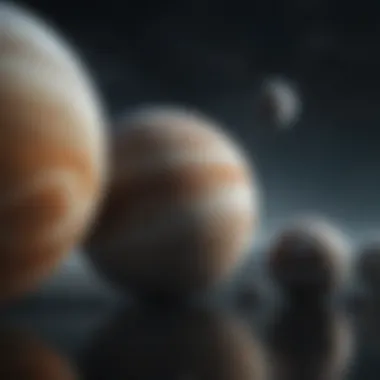
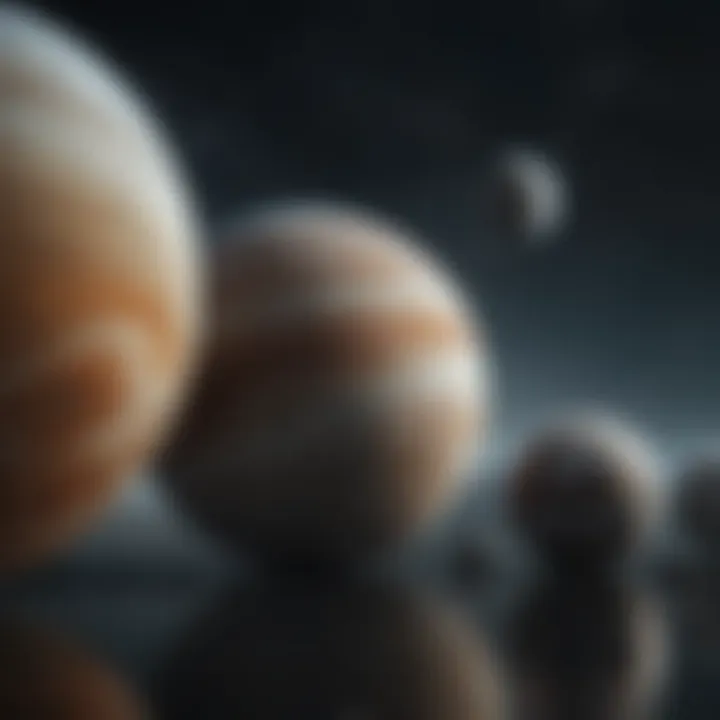
Jupiter's Magnetic Field
Jupiter's magnetic field is one of the most fascinating aspects of this gas giant. It is unique and complex, illustrating how magnetic fields operate on a vast scale. The sheer strength and scale of this magnetic field have important implications not only for Jupiter itself but also for the solar system as a whole. As the largest planet in our system, Jupiter's magnetosphere is a crucial element in understanding planetary science and the dynamics of celestial bodies.
Generation of Jupiter's Magnetosphere
The generation of Jupiter's magnetosphere is a product of its rapid rotation and its internal structure. Unlike terrestrial planets, Jupiter has a fluid metallic hydrogen core that, along with its rotation, contributes to the dynamo effect necessary for creating a magnetic field. The processes at play deep within Jupiter generate electrical currents, which in turn produce a magnetic field of immense strength.
This magnetosphere is about 20 times larger than that of Earth, extending far out into space. It not only encompasses the planet itself but also many of its moons and even extends into the solar wind. This magnetic environment traps charged particles, forming radiation belts that are much stronger than those found on Earth. Understanding this magnetosphere is essential for comprehending how Jupiter interacts with its surroundings.
Interaction with Solar Wind
The interaction of Jupiter’s magnetic field with solar wind is another compelling aspect of its magnetosphere. Solar wind, which consists of charged particles emitted by the Sun, encounters Jupiter’s magnetic field, creating a protective barrier. This barrier shields the planet and its moons from harmful solar radiation. However, this interaction is complex; the strength of the magnetic field influences how solar wind shapes the magnetosphere.
Jupiter’s magnetic field compresses and distorts the solar wind, leading to phenomena such as auroras at its poles. These auroras are visible signs of the energy and interactions occurring in this massive magnetic environment. Thus, studying the interaction with solar wind not only helps us understand Jupiter better but also provides insights into the influences of other planets in the solar system.
"Understanding Jupiter's magnetic field allows for a greater comprehension of not just this planet but its effect on the entire solar system."
"Understanding Jupiter's magnetic field allows for a greater comprehension of not just this planet but its effect on the entire solar system."
In summary, Jupiter's magnetic field is vital for grasping many aspects of planetary science. The generation of its magnetosphere from internal processes reveals much about its structure, while its interaction with solar wind shapes the environment of this gas giant and its moons. Such knowledge is essential for further exploration and understanding of the dynamics of our solar neighborhood.
Space Missions to Jupiter
Space missions to Jupiter have played a crucial role in enhancing our understanding of this gas giant. The exploration of Jupiter provides insights into its atmosphere, magnetic field, and unique moons. These missions serve to uncover secrets about planetary formation, evolution within our solar system, and even implications for exoplanet studies. As researchers delve into Jupiter's complexity, each mission has built upon the discoveries of its predecessors, contributing to a cumulative knowledge that shapes our scientific narrative around the largest planet.
Historical Missions Overview
The historical missions to Jupiter laid the groundwork for our current knowledge. This includes several key missions:
Pioneer
Pioneer 10 and Pioneer 11 were the first spacecraft to journey into the outer solar system. Launched in the early 1970s, these missions provided the first close-up images of Jupiter. The key characteristic of Pioneer is its groundbreaking approach, as it opened the door to the exploration of deep space. The imaged data offered crucial insights into the atmospheric composition and structure of Jupiter.
The beneficial choice of Pioneer lies in its robust design and simple instruments. It managed to send back valuable information despite the challenging environment of space. One unique feature of Pioneer is its ability to survive long distances in space, although its data quality was sometimes limited due to technology of the time. This mission paved the way for future explorations, showcasing the possibilities beyond our immediate cosmic neighborhood.
Voyager
The Voyager missions, specifically Voyager 1 and Voyager 2, significantly advanced Jupiter exploration. Launched in 1977, they provided detailed imagery and data about the planet and its moons. Voyager's key characteristic is its ability to capture stunning photographs of Jupiter’s bands and storms, as well as the intricate details of its moons.
Voyager's contribution is monumental as it revealed previously unknown features such as the Great Red Spot in great detail. Its unique feature is the planetary flyby technique that allowed it to collect data from multiple celestial bodies within a limited frame of time. Although it had limited scientific instrumentation compared to later missions, its discoveries about Jupiter's faint rings and the moons were groundbreaking, offering new avenues for research.
Galileo
The Galileo spacecraft, launched in 1989, represented a significant leap in technology and scientific inquiry. Its extended mission provided a comprehensive study of Jupiter and its moons over a period of years. Galileo’s key characteristic is its advanced onboard instruments, designed to conduct detailed measurements of the planet's atmosphere, magnetic field, and volcanic activity on Io.
The advantageous aspect of Galileo was its long-term presence in the Jovian system, which permitted in-depth analysis of Jupiter's gravitational field and atmosphere. One unique feature was its deployment of a probe, which directly entered Jupiter's atmosphere to conduct measurements at different altitudes. However, it faced challenges due to interference from Jupiter's intense radiation environment, which limited certain operational aspects. Nonetheless, Galileo's findings contributed to a fundamental understanding of the gas giant and its diverse moon system.
Juno Mission Details
The Juno mission, launched in 2011, signifies a contemporary approach to studying Jupiter. This mission aims to explore the composition and structure of Jupiter's atmosphere in unprecedented detail. Juno's primary objective is to uncover the secrets of Jupiter's origin and evolution, ultimately contributing to our broader understanding of planetary systems.
Juno orbits Jupiter and is equipped with advanced scientific instruments designed to measure its gravitational and magnetic fields, providing a clearer picture of its interior. Notably, Juno's unique polar orbit allows it to survey the planet's atmospheric dynamics. The gathered data could have profound implications for theories about planetary formation across the universe.
Jupiter's Influence on the Solar System
Jupiter, as the largest planet in our solar system, wields substantial influence over the dynamics of many celestial bodies within its vicinity. Its massive gravitational field plays a crucial role in shaping the orbits of neighboring planets, moons, and even asteroids. Understanding this influence enhances our comprehension of solar system formation and stability.
Gravitational Effects
The gravitational pull of Jupiter is a defining factor in the solar system. Being about 318 times more massive than Earth, Jupiter's gravity affects the trajectories of nearby objects. This is particularly noticeable with its own myriad of moons and other celestial bodies.
Jupiter’s gravity can stabilize the orbits of other planets, especially Mars and Earth. When minor planets, asteroids, or comets venture close to Jupiter, they may be captured into its orbit or deflected by its immense gravitational force. This interaction not only prevents potential impacts on the inner solar system but also helps in maintaining the orbits of these bodies.
- Orbital Dynamics: Jupiter's gravitational influence contributes to the stability of the entire solar system. This results in a balance that allows for predictable paths of other planets.
- Capture of Asteroids: Some asteroids are captured by Jupiter’s gravity. This process helps to prevent them from colliding with terrestrial planets.
Protection from Asteroids
Jupiter acts as a kind of shield for the inner solar system. The immense mass of this gas giant sways many asteroids in the asteroid belt. Should these asteroids stray too close, Jupiter's strong gravitational field can redirect them, potentially preventing collisions with Earth and other inner planets.
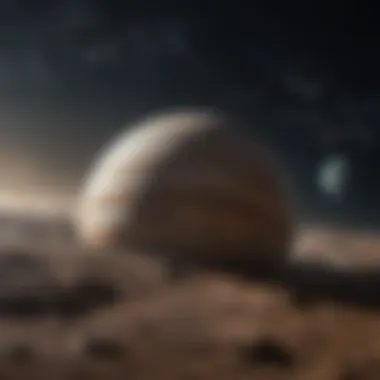
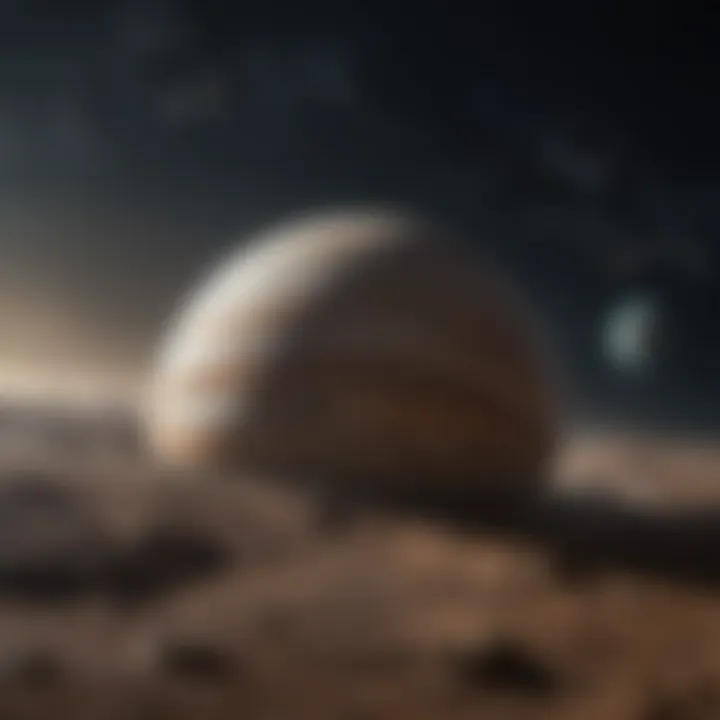
In addition, the so-called Trojan asteroids are an example of this protective mechanism. They share Jupiter's orbit while remaining safe from paths that would lead them to interact dangerously with the inner planets.
The presence of Jupiter significantly influences impact rates on Earth. Some studies suggest that without Jupiter's gravitational presence, the number of impacts from asteroids may have been far higher, posing greater risks to developing life on Earth.
- Trojan Asteroids: These are asteroids that share an orbit with Jupiter. They remain stable and illustrate Jupiter's influence in managing such objects within the solar system.
- Impact Frequency Reduction: By altering the paths of threatening asteroids, Jupiter contributes to a lowered risk, allowing Earth and other inner planets to maintain a safer environment.
Jupiter, in its role as the solar system's guardian, significantly reduces the likelihood of catastrophic asteroid impacts on Earth.
Jupiter, in its role as the solar system's guardian, significantly reduces the likelihood of catastrophic asteroid impacts on Earth.
Future Exploration of Jupiter
The exploration of Jupiter is of paramount importance for various reasons. Firstly, this gas giant serves as a crucial reference point in understanding planetary formation across the universe. As the largest planet in our solar system, Jupiter's mass and composition help to define the differences and similarities of other celestial bodies. Moreover, studying Jupiter's atmosphere, magnetic field, and moons can provide insights into the broader dynamics of planetary systems.
New missions to Jupiter aim to address fundamental questions about its origin and evolution. They will also extend our knowledge of potential habitable environments on its moons, particularly Europa, which may harbor subsurface oceans. The future exploration of Jupiter has the benefit of leveraging advanced technology and international collaboration, making it a promising field of study and exploration.
Upcoming Missions
JUICE
The Jupiter Icy Moons Explorer (JUICE) is a significant mission targeted to launch in 2023 and arrive at Jupiter in 2031. This mission focuses on exploring three of Jupiter's largest moons: Europa, Ganymede, and Callisto. A key characteristic of JUICE is its versatile scientific objectives, which include examining the icy crusts of these moons and their potential habitability. JUICE aims to assess the composition of Europa’s surface, map Ganymede's ice shell, and investigate Callisto’s geological history.
A unique feature of JUICE is its capability to conduct detailed investigations with high-resolution imaging, along with the deployment of a suite of instruments designed for both orbital and surface studies. This mission is a beneficial choice for this article due to its potential to answer questions about the presence of water and the underlying geophysical processes of these moons, enhancing our understanding of subsurface oceans and their capacity to support life.
Europa Clipper
Slated for launch in the 2020s, the Europa Clipper mission focuses primarily on Europa's habitability. The mission's specific aspect is to conduct extensive reconnaissance of Europa's ice-covered ocean and its possible interactions with the icy surface. A vital characteristic of Europa Clipper is its suite of scientific instruments that will allow detailed measurements of the moon's ice shell and analyze its surface composition.
The unique feature of Europa Clipper includes its ability to perform multiple flybys of Europa, conducting a series of observations that can unveil the structural and chemical properties of potential habitats. Its commitment to studying this moon makes it an essential part of this article, as it could provide invaluable data in the search for extraterrestrial life and advance our comprehension of ice-covered oceans in the outer solar system.
Technological Advancements
Technological advancements play a crucial role in future exploration missions to Jupiter. The development of more efficient propulsion systems, advanced imaging technology, and autonomous navigation systems are some innovations reshaping how we approach deep space missions. New instruments are being designed to withstand the harsh radiation environment around Jupiter and collect data critical for our understanding of the planet and its moons.
Furthermore, improvements in satellite communications technology are helping to ensure a continuous stream of data back to Earth. These advancements not only improve mission efficiency but also enhance the data quality collected from the far reaches of our solar system, leading to better research and comprehension of planetary systems.
Jupiter and Exoplanet Research
The study of Jupiter is an essential aspect in the field of exoplanet research. As the largest planet in our solar system, Jupiter serves as a crucial benchmark for understanding the formation and evolution of gas giants beyond our own celestial neighborhood. The characteristics of Jupiter, including its size, atmospheric composition, and gravitational influences, allow scientists to draw parallels to exoplanets discovered around other stars.
Comparative Planetology
Comparative planetology helps scientists to analyze similarities and differences between planets within our solar system and those found orbiting distant stars. Jupiter plays a vital role in this analysis. Researchers look at its structure, atmosphere, and magnetosphere to develop models for exoplanets. Studies suggest that many exoplanets have qualities similar to those of gas giants like Jupiter. For instance, the discovery of hot Jupiters—gas giants that orbit close to their stars—has challenged previous notions of planet formation. Understanding Jupiter can provide vital clues about how these exoplanets might behave, their potential climates, and even their atmospheres.
Another aspect is the various moons of Jupiter, which can offer insights into the diversity of planetary systems. The extreme conditions on Jupiter's largest moons, like Europa and Io, encourage discussions about habitability and surface processes, relevant benchmarks for understanding exoplanets with similar features.
Implications for Understanding Exoplanets
Studying Jupiter carries significant implications for our understanding of exoplanets. Insights gained about Jupiter's intense storms, such as the Great Red Spot, and its complex atmospheric dynamics can offer models for predicting weather patterns on distant worlds. Furthermore, Jupiter’s magnetic field influences space weather; understanding this can help scientists make predictions about the atmospheres of exoplanets, particularly those closer to their host stars.
Additionally, the strong gravitational pull of Jupiter has shaped not only its own system but also influenced the structure of the overall solar system. This insight emphasizes the need to study similar gravitational effects in other systems, which can signal the presence of additional or undiscovered planets in those systems.
"Jupiter is not merely a massive gas giant; it is a key that unlocks the understanding of other worlds beyond our solar system."
"Jupiter is not merely a massive gas giant; it is a key that unlocks the understanding of other worlds beyond our solar system."
Moreover, advancements in telescope technology enhance our ability to study exoplanets' atmospheres, revealing compositions and potential biological markers. Through comparative studies, we can establish what characteristics might be common among gas giants, refining our approach to identifying habitable conditions on far-off worlds. Thus, Jupiter remains a fundamental piece in the intricate puzzle of exoplanet exploration.
Cultural and Historical Perspectives
Understanding the cultural and historical significance of Jupiter enriches our appreciation of this majestic planet. Throughout history, Jupiter has been a prominent figure in various cultures, symbolizing power, authority, and grandeur. As the largest planet in our solar system, its immense size and brightness have made it an object of fascination for both ancient and modern civilizations.
Jupiter in Astronomy and Mythology
Jupiter was named after the king of the Roman gods, reflecting its regal status in the night sky. This celestial body was revered across civilizations, including the Babylonians, who recognized its movement as early as 1400 BC. Jupiter is associated with several mythological tales. For example, in Roman mythology, Jupiter wielded a thunderbolt, while in Greek mythology, he was known as Zeus, similarly linked to thunder and lightning.
The planet has also influenced astronomical studies significantly. Observations of Jupiter contributed to early understandings of celestial mechanics and the behavior of planets. For instance, the four largest moons of Jupiter, Io, Europa, Ganymede, and Callisto, discovered by Galileo Galilei in 1610, challenged the geocentric model of the universe. Their existence provided solid evidence for the heliocentric theory, which posited that planets revolve around the sun.
Impact on Scientific Thought
Jupiter’s immense role in shaping scientific thought cannot be overstated. It catalyzed a shift in perspective regarding our place in the universe. The study of Jupiter transformed not only astronomy but also influenced other fields like physics and mathematics. The complex dynamics of the Jovian system prompted scientists to investigate gravitational interactions, fostering the development of laws that govern motion.
Moreover, contemporary research on Jupiter has spurred advances in planetary science. The study of its atmospheric composition and magnetosphere has provided insights into the fundamental processes shaping gas giants. The ongoing Juno mission, for example, aims to uncover secrets about Jupiter's formation and evolution, further influencing our knowledge about the origins of planetary systems.
"Jupiter acts as a natural laboratory for studying planetary atmospheres and magnetic fields. Its features reveal insights about the composition and dynamics of gas giants throughout the universe."
"Jupiter acts as a natural laboratory for studying planetary atmospheres and magnetic fields. Its features reveal insights about the composition and dynamics of gas giants throughout the universe."



